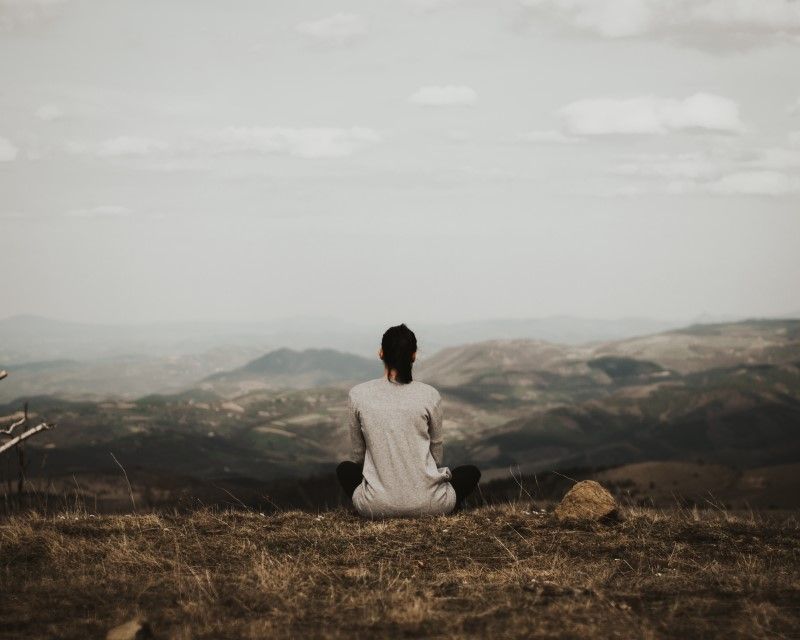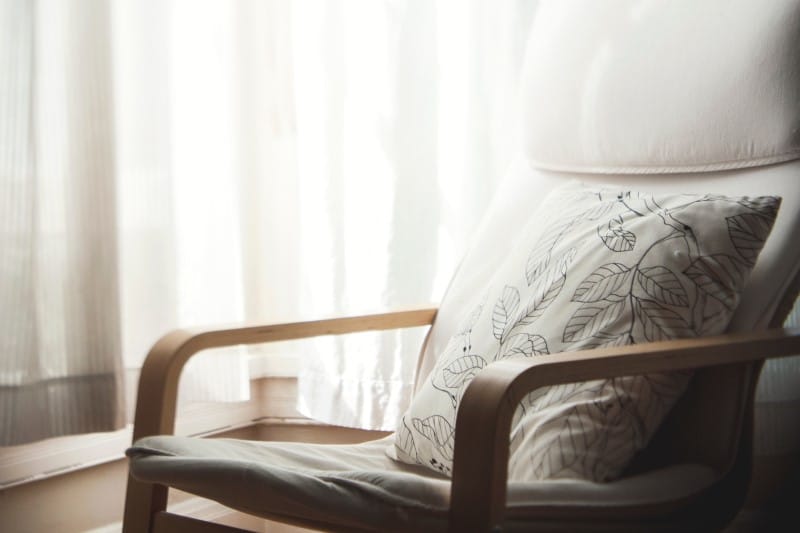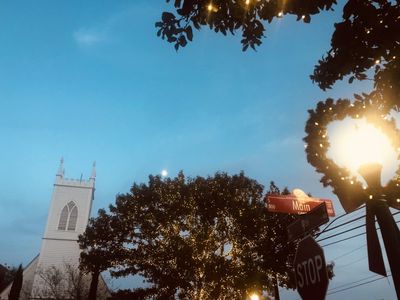When I hear people talk about anxiety, I notice the same words over and over: fight, crush, battle. I know this type of language is meant to empower people. After all, it’s only natural to see anxiety as an enemy in our minds, a villain that needs to be defeated. It sure acts like one.
I spent most of my life fighting anxiety. But I don’t anymore.
When anxious thoughts and feelings arise, anxiety itself tells us that we have only two options: fight or flight. So we either go to battle against our thoughts or we pursue distractions. But there’s a third option besides fight or flight, and it took me decades to find it: float.
I fought anxiety for more than twenty years. For most of that time, it was a nameless enemy. When my unprovoked panic attacks started at age five, I didn’t have the vocabulary to describe my experiences: the frantic, intrusive thoughts, compulsions, avoidance behaviors, the inner static that buzzed in my mind and body.
For most of my childhood and young adulthood, this anxiety gathered and dissipated like storms at sea. There would be rare seasons when anxiety wasn’t present in my life at all. At other times, it showed up with such ferocity that daily activities became difficult.
At their worst, my anxious thoughts and fears seemed to twist my personality and shrink my world. I became moody, fearful, inexplicably angry, irrational, agoraphobic. The worst part was that I had no explanation for any of this. I thought I was going crazy.
When I was 27, my anxiety became an inner roar. I felt pummeled by it, and I couldn’t use my usual tricks to fight it off anymore. I knew I needed help. My first step was to finally tell someone about my struggles: my boyfriend. My next step was to make an appointment with a therapist. She was the first person to give me a name for my nearly lifelong struggle: anxiety disorder.

There were many, many steps after those first two. Anxiety is complicated. The past nine years have been an ongoing process of learning what I need to be mentally healthy. I could give you a laundry list of all the things that have contributed to my restored well-being: therapy, compassionate friends, medication, my faith.
Yet my understanding of anxiety’s false choice has helped me the most. When the storm of anxiety builds and the waves crash, I don’t have to fight. I don’t have to flee. Instead, I’ve learned to float. (If you’re not concerned with alliteration, you could also go ahead and call it acceptance.)
One of the most effective treatments for most anxiety disorders is a type of cognitive-behavioral therapy called exposure therapy. The main idea with exposure therapy is that you (with the help of a therapist) purposely and systematically do and think the very things that cause you anxiety. Then when the anxious thoughts and feelings arise, you don’t fight against them or distract yourself. You accept them. You ride them out.
It’s counterintuitive and it’s very difficult. But over time, anxious thoughts and feelings lose their power as you become desensitized to them. Studies show that this practice works because it actually rewires our brains over time, forging new neural pathways.
A powerful practice that’s helped me with exposure therapy and learn to coexist with anxious thoughts and feelings is mindfulness meditation. Mindfulness is a buzzword these days, but it’s been around for a long time. It’s the practice of being fully present with whatever you’re doing.
To be mindful means to focus on what you can see, hear, taste, smell, and touch at the present moment. You can eat mindfully, exercise mindfully, wash dishes mindfully. You can also meditate mindfully.

Forty years ago, Jon Kabat-Zinn, a professor at the University of Massachusetts Medical School, adapted meditation practices to treat chronic pain with a technique now known as “mindfulness-based stress reduction.”
After studying Buddhist meditation, Kabat-Zinn secularized it, discovering that part of managing chronic pain—and later, anxiety—involved learning to accept it and coexist with it. The current mindfulness fad can actually be traced to his work.
About four years ago, I signed up for a mindfulness-based stress reduction class that was offered at a clinic in my city. I had never tried meditation. In fact, because of my anxiety, I was afraid of it. But based on what I had learned in therapy, it seemed like it was worth a try.
The class had about 20 people, all of us dealing with some form of anxiety. We met for three hours once a week for 10 weeks. Our instructor was an affable psychiatrist who went by “Dr. Andy.” He wore baggy corduroys and walked around in his stocking feet. He was refreshingly down-to-earth and somehow, he even managed to make us laugh.
The class was part lecture and part meditation time. Each week we had homework that included assigned readings and the expectation that we’d meditate for at least three 30-minute sessions on our own. It was incredibly hard at first. Yet by the end of the course I could meditate for up to 40 minutes. I even bought a meditation cushion.
Since the class, I’ve continued to make mindfulness meditation a priority in my life. Currently, I use the Calm app and try to meditate at least 15 times a month.

I’m by no means an expert, but I’ve learned some things along the way. If you’re dealing with anxiety and are interested in exploring mindfulness meditation, here are some things to know.
1. Mindfulness meditation is easier to learn with an instructor.
I loved the MBSR class I took, and it’s offered in communities around the country. But you can also get sufficient instruction from meditation apps. I use the Calm app now, but I previously used Headspace and actually think it’s a better app for beginners. Headspace also offers a lot of helpful animated videos that explain meditation. Here’s a great example.
2. Mindfulness meditation is a mental workout.
Just like physical exercise, meditation won’t give you instant results. It requires regular practice over time. I’m a runner and I see running as a helpful metaphor for meditation. When the ice melts in the spring and I start running outside again, running is hard. I feel out of shape and sore and annoyed. But I keep running anyway because I know from experience that it gets better.
When I first started meditating, I always felt jittery, unable to sit still. Back then, it was easy to interpret this as a sign that I shouldn’t continue, or that I was doing it wrong. But Dr. Andy said this was normal, so I kept at it. He was right.
3. Mindfulness meditation is not a religious or spiritual practice. Yet, it can be.
Most mindfulness meditations are simply about focusing on your senses—sounds, physical sensations, breathing. I’m a Christian, however, so sometimes I bring aspects of that into my meditation time. For me, meditation is a natural segue into prayer.
Before I learned about mindfulness, my prayers always tended to be chatty monologues, even the inward ones. Now I understand the beauty of silence and listening. You can make mindfulness meditation as spiritual as you want. Or not.
4. Mindfulness meditation is easier with the support of other people.
Meditation requires that you have some uninterrupted time to yourself. (My current meditation sessions are about 10 minutes.) Unless you live alone, the only way to get this is to let other people know what you’re doing.
I have to admit, I felt weird when I first starting meditating. It felt self-indulgent to say to my husband, “Excuse me, I need to meditate now.” But in order for people to understand and support what you’re doing, you need to fill them in.
5. Mindfulness meditation does not require complete silence or a perfect environment.
In fact, there’s actually a type of meditation called “sound meditation” where you close your eyes and focus on all the sounds you can hear. I live in an apartment building and I’ve learned to meditate despite barking dogs, idling car engines, and my neighbors’ loud music. Silence is nice, but not necessary.
In the years since my first anxiety diagnosis, I’ve become a kayaker. The experience has given me an imperfect, yet helpful, illustration of my newfound approach to anxiety. We’ve taken a couple of trips to the open waters of Lake Superior and Lake Michigan where the swells are deep and cold. High-speed boat traffic regularly stirs up the waters and sends rolling waves towards us as we paddle along. This used to scare me.
When a boat passes and the waves start heading my direction, my natural instinct says to tense up and resist them or retreat towards shore.
But I’m learning. And instead I choose a better option: I slowly turn my kayak to face the waves, relax, and float over the top of them.
• Listen to the podcast episode about this post



